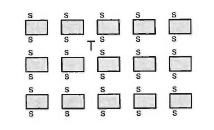4. Classroom Management
4.1. What is Classroom Management?
According to Scott and Ytreberg (1990), classroom management is the organisation and atmosphere of class. These include the lesson, environment, the chairs organisation.4.2. Why Classroom Management?
It's important to attend to diversity, to discipline, learning, the relationship in the class, and for working and obtain good results. Also, classroom management allowes dinamics activities, comunication, mobility, motivation. With all of that the pupils are more self-confident.
4.3. Which conditions will enable children to learn?
As Scott and Ytreberg (1990) say, a good atmosphere, to feel confident and equally and to enjoy with the activities.
4.4. What characteristics have an ideal teacher to help children learn English?
According to Scott and Ytreberg (1990), an ideal teacher search new and interesting activities, using music and drawing, and creating an atmosphere where children don't be afraid to wrong.
With classroom management, teacher can listen the children that aware of their evolution. It's good for working the self-esteem.
With classroom management, teacher can listen the children that aware of their evolution. It's good for working the self-esteem.
4.5. Groups
Accordign to House (1997) usually, the classroom organisation and work has been very traditional. First, the teacher addres the class. Students answered in whole gruop or one by one. This is known as "frontal" teaching. Then, students were sat alone and did all the work individually.
These two characteristics make the active communication very difficult and are very limited. We think like House (1997) that one of the reason of this methodology is the teacher has students controlled, classroom discipline is very easy and everyone is silent.
But we, the teachers, have become aware of noise in the English class is something very common.
There are a lot of groups dynamics tha we can use in different activities. The advantages are the following:
- Children will have more speaking time.
- Students adopt teacher role. They act like teachers, passing information and helping each other.
- Working in pairs or small groups make students more cooperative and more independent.
- Education becomes personal and individual.
- Sometimes pupils need to move during a lesson, but if you make the class with different gruop dynamics the will stand up and move.

Small groups
|
Pairwork
 |
| Teacher to individual students
Small group to small group
|
Individual work
4.6. Discipline
Since each
teacher has a discipline depending on class behavior, House (1997) proposes a
basic guide for classroom management, detecting problems and applying remedies.






No comments:
Post a Comment